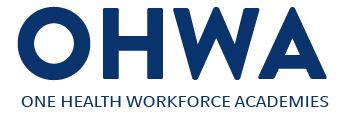One Health approach and health systems
1.) Please select Network:
AFROHUN
2.) AFROHUN – Please select OHUN or Country:
SENEGAL
2.1) SENEGAL – Please select a University:
Université Cheikh Anta Diop (UCAD), Ecole Inter-Etats des Sciences et Medicine Veterinaires (EISMV) de Dakar
3. What is the specific title of the One Health training and empowerment activity?:
One Health approach and health systems
4. What is the code number associated with this activity (i.e.in the University’s Catalogue used to enroll in the activity)?:
AOS 2101
5. Trainee Workload: What are the number of credits or units awarded for completion of the training activity?:
7
6. Who is the target audience (types of trainees) for this One Health training and Empowerment activity?:
Master’s Degree
7. Learning Objective: What are the One Health Competency domains presented for this training and empowerment activity?:
One Health Principles and Concepts
One Health Leadership
One Health Collaboration and Partnership
One Health Communication and Informatics
Principles of Public Health (One Health Perspective)
One Health Surveillance
8. Learning Outcomes: What is the Expected level of Competence for Trainees who complete the One Health training and empowerment activity?:
Advanced
9. What is the method of delivery of the training activity (Engagement of trainees)?:
Combination of online and in-person
10. Curriculum Design: Is the training activity designed to deliver knowledge of One Health topics or is the emphasis on the level of competencies, or both?:
The syllabus is designed to accommodate both content-driven and competency-based activities.
11. What Teaching Strategies are used?:
In-person group lectures
Synchronous (students learning together at the same time with a teacher)
Class demonstrations (utilizing public speaking: Faculty led activity)
Problem or case-based learning (e.g. case studies)
12. What is the period of time allocated to the training and empowerment activity?:
Weeks
12.3 Number of weeks allocated to the training and empowerment activity:
4 weeks
13. What is the period of time expected for the instructor (lecturer, faculty member, and teaching assistants) to deliver instruction to the trainee(s)?:
Days
13.2 Number of days expected for the instructor to deliver instruction to the trainee(s):
17 to 18
14. What are the number of hours of study (outside of direct classroom or virtual instruction) required, including private or group study time, homework, required readings, projects and field practice per week?:
84
15. Are there pre-requisites for the training activity?:
Yes
16. Please describe or list the pre-requisites.:
achieve undergraduate program of vet school
17. What is the approximate minimum # of trainees who enroll in this activity each time it is offered?:
5
18. How many times a year is this training and empowerment activity offered?:
1
20. Is there a minimum passing score for the course?:
Yes
21. In general, what is the proportion of trainees who pass each time the training and empowerment activity was offered?:
95
22. Please provide the type of evaluation tool used to assess how well the instructor, lecturer, or faculty member performed in delivering the training activity to trainees.:
Trainee feedback
23. If there is Trainee feedback (answered in 20), please provide the type of evaluation for trainees to assess the quality of the training and empowerment activity.:
Questionnaire
Meetings/debrief
24. Are trainees who completed the training activity (alumni) tracked to assess if and how they use knowledge gained and competencies acquired in their employment situation?:
Yes
25. What is the process used to contact and obtain information from trainees who complete the training and empowerment activity (alumni)?:
through e-mail exchanges
26. Is there extramural funding support for offering the training activity?:
Yes
27. Please indicate how the course is funded::
Mix of Private and OPublic Funds
Other (specify)
27.1 Please Specify:
some national animal Health project
28. Is the training activity offered to non-university students?:
Yes
29. Is the training and empowerment activity documented in the official University catalogue?:
Yes
30. If available, please provide a web link to the training/course.:
online presentation of the master programm on eismv website
31. Is this course approved for Continuing Professional Development (CPD) credits or hours?:
No
32. Are there new One Health-focused training activities being developed for future offerings at the University?:
No
33. Are there One health-focused training activities that will be discontinued in the near future (i.e. next year)?:
No
34. Please share any final comments about the One Health training activity.:
The One Health teaching unit is the first in the MVPH programme. Part of the course is delivered to students of the other EISMV Masters programmes
35. Is a syllabus (curriculum for the specific training and empowerment activity) available to upload on this website?:
No
38. Are there other training documents available that you are able to upload on this platform (e.g. curriculum document, competency framework, assessment tool, grading rubric, and others)?:
No
41. Are there any comments that you would like to share?:
No
42. Do you have another training and empowerment activity in this category?:
No
